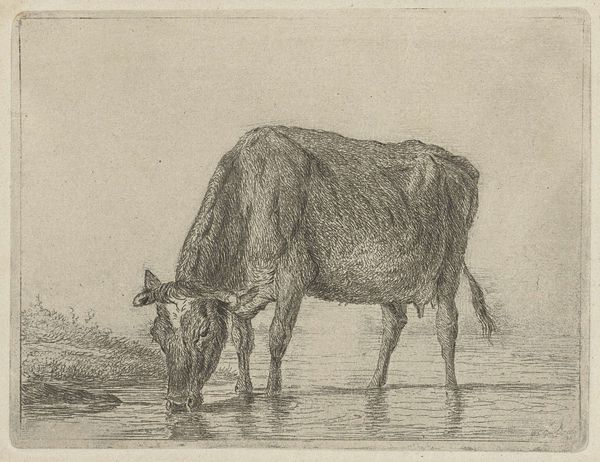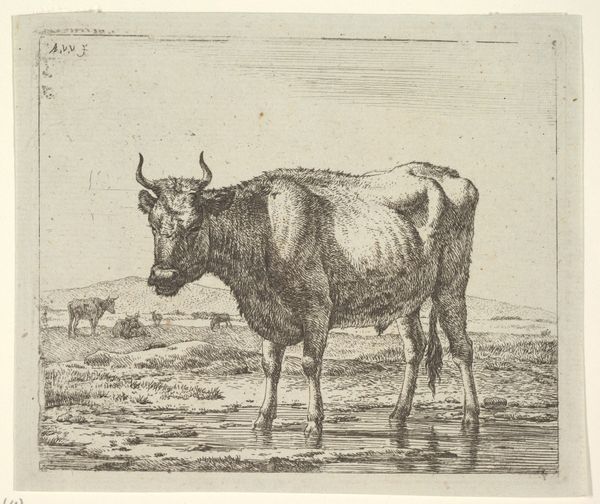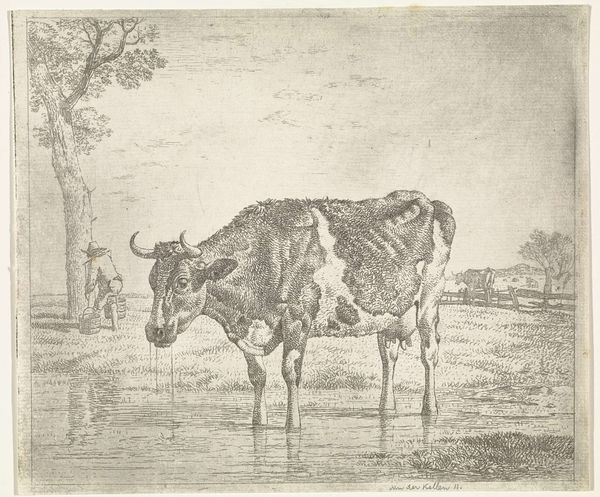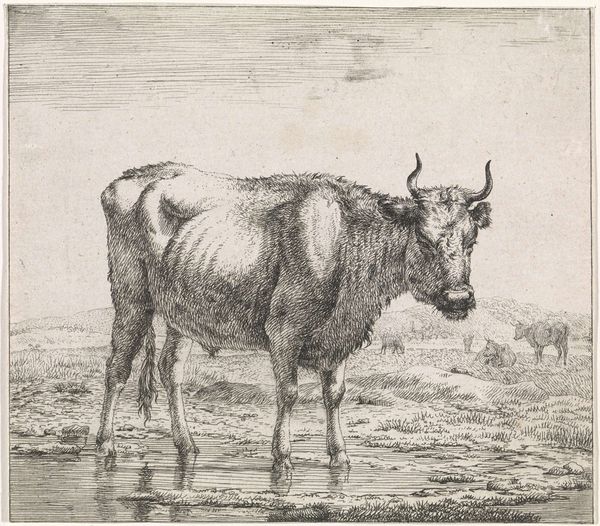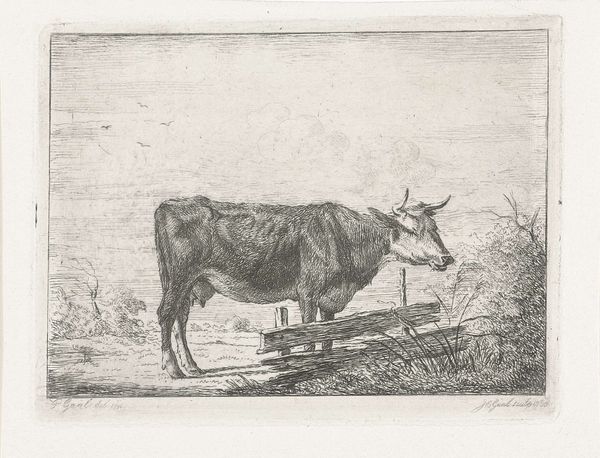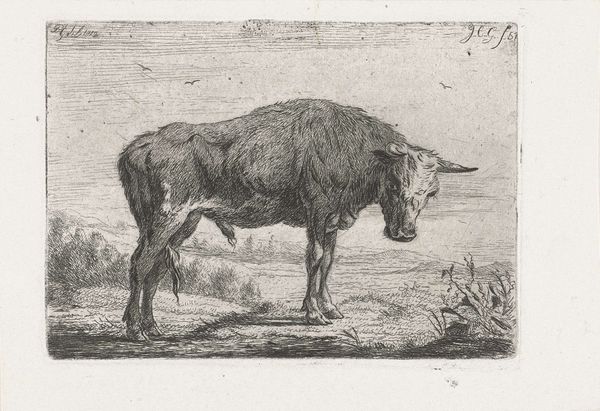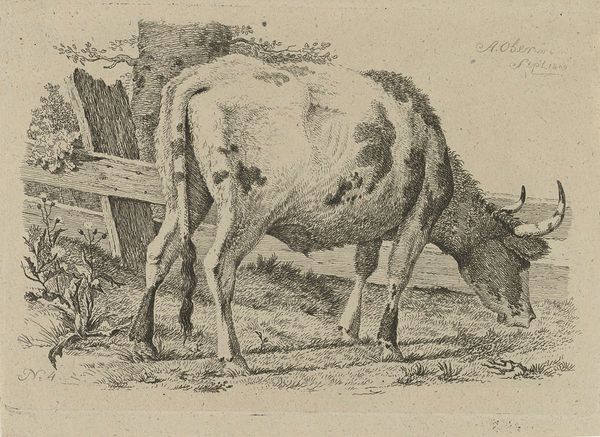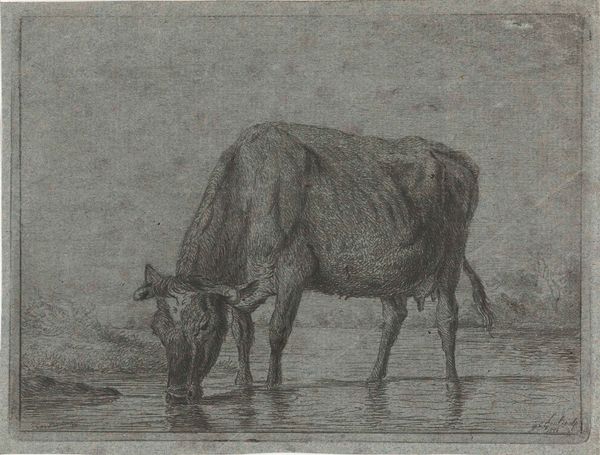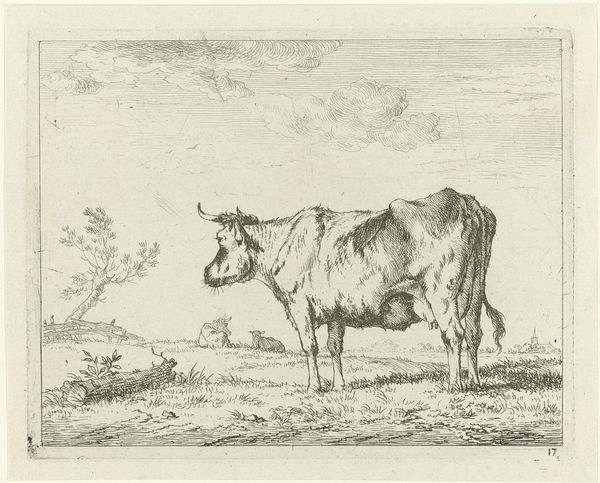
print, etching
# print
#
etching
#
old engraving style
#
landscape
#
realism
Dimensions: height 115 mm, width 152 mm
Copyright: Rijks Museum: Open Domain
Editor: This is Jacobus Cornelis Gaal's "Drinkende Koe," or "Drinking Cow," from 1851. It's an etching. There’s something really calming about this piece, but the cow also feels very isolated in the landscape. What do you see when you look at it? Curator: From a formalist perspective, I’m drawn to the contrasting textures achieved through the etching technique. Notice the dense, almost velvety, darkness used to render the cow's body, versus the lighter, more delicate lines describing the water and the distant trees. The composition centers on the cow, of course, but also consider how the horizontality of the water balances the bulk of the animal. Editor: Yes, the contrast makes it stand out more, but doesn't the isolation feel a bit… bleak? Is there any meaning to that? Curator: Meaning can be constructed through the analysis of form. Bleakness isn't inherently present; it arises through our interaction with the artwork's structure. For instance, the muted palette and relatively empty space surrounding the cow underscore its self-contained presence. Consider how the limited range of tonal values shapes your perception. Is it bleak, or simply quiet? Editor: Quiet... I like that. I was so focused on the subject, I didn’t really think about the negative space. Curator: Precisely! By shifting your focus to the formal elements – line, tone, composition – you start to unpack the aesthetic strategies at play. Consider, too, the deliberate imperfections in the etched lines themselves; they contribute a sense of realism, defying idealized representations of rural life. Editor: That's fascinating. It completely changes how I see the artwork, realizing the form is integral to creating the mood. Thank you! Curator: My pleasure. I find that approaching art through its inherent qualities—the way it’s put together, materially and visually—reveals more about the artist’s intent, and ultimately, shapes our understanding and interpretation.
Comments
No comments
Be the first to comment and join the conversation on the ultimate creative platform.
